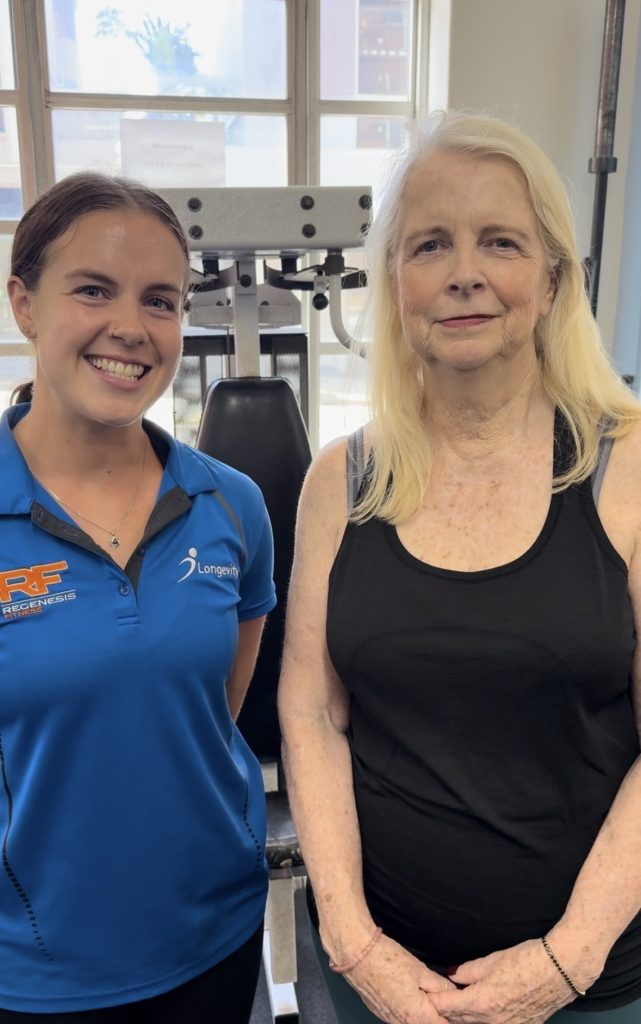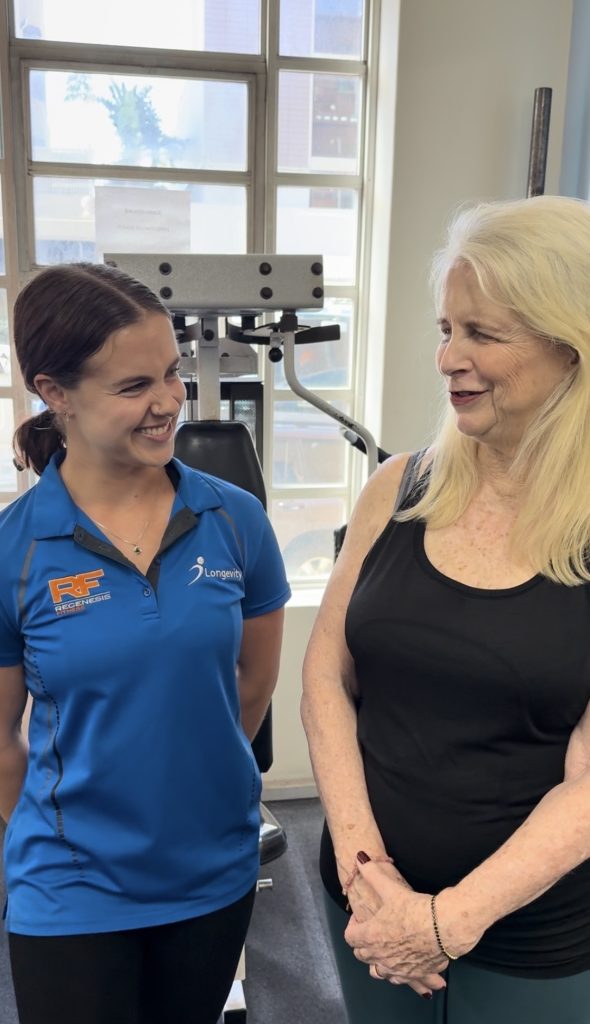Strengthening Bones, Strengthening Lives: Exercise, Longevity, and Osteoporosis in Women
Imagine a woman in her golden years, full of energy and zest for life, hiking through scenic trails, playing with her grandchildren, and embracing every moment. Now, consider the silent threat of osteoporosis, a condition that weakens bones and increases the risk of fractures, potentially disrupting this vibrant lifestyle. Osteoporosis predominantly affects women, especially postmenopausal women, and often goes unnoticed until a bone breaks.

Yet, there is a powerful ally in the fight against osteoporosis: exercise. Regular physical activity is not just about staying fit; it’s a vital strategy for maintaining bone health, preventing fractures, and enhancing overall well-being. Weight-bearing exercises, strength training, and balance activities can help increase bone density, improve muscle strength, and reduce the risk of falls. By incorporating these exercises into their routine, women can build stronger bones and enjoy a longer, healthier life.
Incidence and Mortality Rate
Osteoporosis is a significant health concern in Australia, affecting approximately 23% of women aged 50 and over. This condition significantly increases the risk of fractures, particularly in the hip, spine, and wrist. Fractures related to osteoporosis can lead to severe complications, including chronic pain, disability, and increased mortality rates. In 2022, osteoporosis contributed to 2,659 deaths in Australia, representing 1.4% of all deaths.
Who is at Risk?
Women are at a higher risk of developing osteoporosis compared to men. This risk increases with age, particularly after menopause, due to the decline in estrogen levels, which plays a crucial role in maintaining bone density. Other risk factors include a family history of osteoporosis, low body weight, and certain medical conditions such as rheumatoid arthritis. Additionally, women of white or Asian descent are more likely to develop osteoporosis.
Risk Factors and Their Modifiability
While some risk factors for osteoporosis are beyond control, many are modifiable through lifestyle changes. Key modifiable risk factors include:
Physical Inactivity: Regular exercise, especially weight-bearing and strength-training activities, can help maintain and improve bone density.
Poor Nutrition: Adequate intake of calcium and vitamin D is essential for bone health. A diet rich in these nutrients can help prevent bone loss.
Smoking and Alcohol Consumption: Both smoking and excessive alcohol intake are linked to decreased bone density and increased fracture risk. Reducing or eliminating these habits can significantly improve bone health.
Low Body Weight: Maintaining a healthy weight through a balanced diet and regular exercise can reduce the risk of osteoporosis.

By addressing these modifiable risk factors, women can take proactive steps to protect their bone health and reduce the risk of osteoporosis-related fractures.
How Longevity Can Help You
As exercise physiologists, we firmly believe that exercise is a form of medicine. We strategically tailor workouts to address daily presenting symptoms while helping you improve your cardiovascular health, strength, bone density, and mental well-being. Let us guide you towards a healthier, more radiant lifestyle, ensuring you thrive during and beyond menopause. Take control of your health and well-being today.
If you know anyone who would benefit from working with us, please contact us.
Ready to take the first step toward increasing your fitness and lifespan? Call Longevity Exercise Physiology Ascot Vale, Burwood, Casey, Castle Hill, Coburg, Drummoyne, Edgecliff, Five Dock, Gladesville, Gungahlin, Kingsgrove, Liverpool, Macarthur Campbelltown, Macarthur Tindall, Marrickville, Neutral Bay, Penrith, Pymble, Pyrmont, Randwick, Rhodes, Rosebery, Springfield, Yamanto today on 1300 964 002 to book your personalised session or a 15-minute free phone consultation.
Written by Admin
References
1: Australian Institute of Health and Welfare 2: Australian Institute of Health and Welfare 3: Mayo Clinic : Cleveland Clinic : International Osteoporosis Foundation : Medical News Today : WebMD : Medicine LibreTexts
